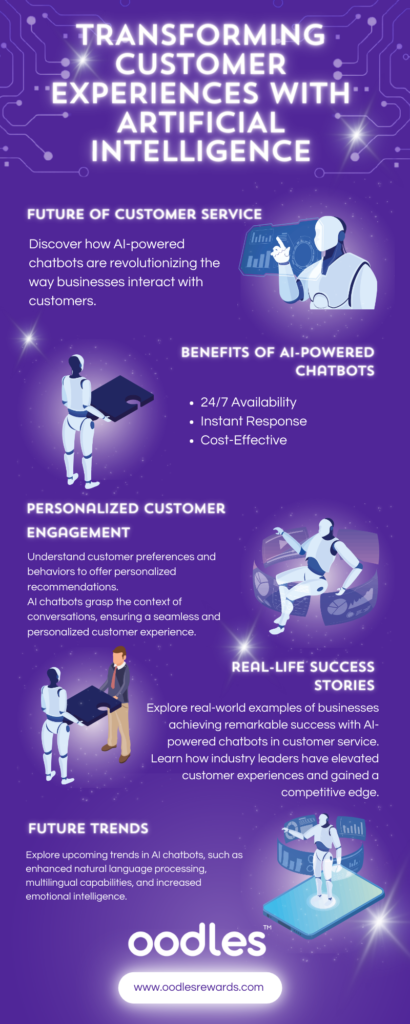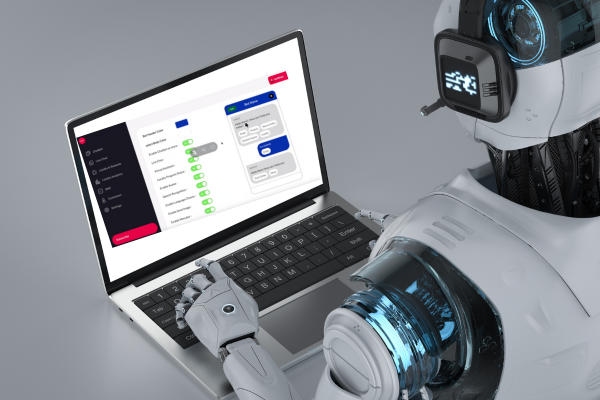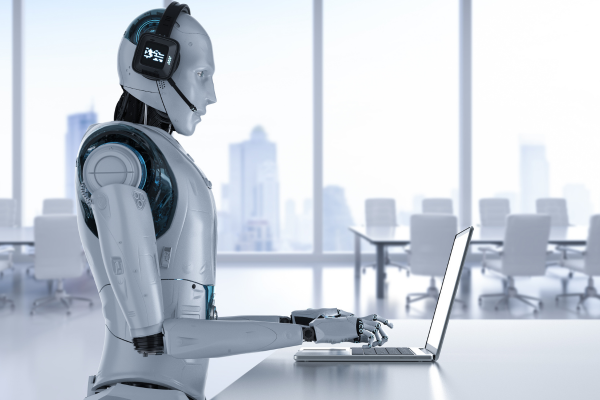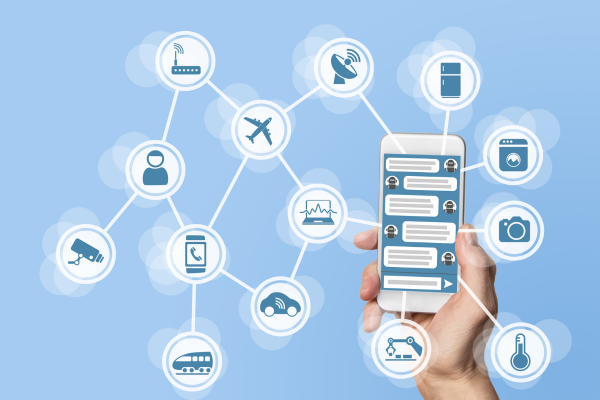Introduction: The Dawn of AI in Customer Service– In the bustling digital marketplace of today, a silent revolution has been unfolding—one that’s redefining the essence of customer interactions. Artificial Intelligence (AI) is powered by this revolution, primarily through chatbots. Envision a scenario where customer inquiries are met with instantaneous, precise responses at any hour of the day without the limitations of human fatigue or errors. This vision, once a fragment of science fiction, has become a tangible reality in contemporary customer service landscapes. The journey of AI from rudimentary, scripted chatbots to today’s sophisticated, empathetic digital assistants is nothing short of remarkable. It’s a story that mirrors the evolution of technology and its ever-deepening integration into the fabric of business and customer engagement.
- The Evolution of Chatbots: From Simple Scripts to AI Wonders
The history of chatbots dates back to the mid-20th century, but their true evolution began with the advent of the internet. Initially, these digital assistants were essential, script-based programs that could only respond to specific inputs with pre-defined outputs. They lacked the nuance and understanding necessary for complex human interactions. However, as technology advanced, so did the capabilities of chatbots. Integrating AI and Natural Language Processing (NLP) marked a significant leap forward. These modern chatbots can understand context, learn from interactions, and respond in a way that’s increasingly indistinguishable from human conversation. They are not just answering queries; they provide solutions, advice, and even empathy, revolutionizing how businesses interact with their customers.
- Current State of AI-Powered Chatbots
Today’s AI-powered chatbots have transcended their initial programming to become sophisticated tools integral to business operations. A study by Salesforce indicated that 69% of consumers prefer chatbots for quick communication with brands. This preference is not unfounded; modern chatbots are equipped with advanced AI algorithms, enabling them to handle various customer service tasks, from answering FAQs to resolving complex queries. Their ability to learn and adapt from each interaction enhances their efficiency. Businesses across multiple sectors – from e-commerce to healthcare – are now harnessing the power of AI chatbots not only as a cost-effective solution for customer service but also as a means to improve customer experience, drive sales, and gather invaluable insights into customer behavior and preferences. The current state of AI chatbots represents a blend of technological innovation and practical utility, marking a new era in customer-business interaction.

- Advantages of AI-Powered Chatbots
Adopting AI-powered chatbots brings many advantages to businesses, fundamentally changing the customer interaction landscape. One of the most significant benefits is the enhancement of customer service efficiency. Chatbots can handle thousands of queries simultaneously, something unimaginable for a human workforce, thus reducing wait times and improving response rates. Additionally, they offer personalized customer experiences by analyzing user data and preferences to tailor responses and recommendations. This level of personalization not only boosts customer satisfaction but also fosters loyalty.
Moreover, AI chatbots are operational 24/7, providing consistent support around the clock, irrespective of time zones or holidays. This continuous availability is crucial in today’s global market, where customers expect immediate responses at any hour. Another key advantage is the worldwide reach of chatbots. Equipped with multilingual capabilities, they can communicate with customers from different linguistic backgrounds, thus breaking down language barriers and expanding the business’s market reach. Integrating AI in chatbots also offers a valuable opportunity for companies to gather and analyze customer feedback and behavior, leading to more informed business decisions and strategies. AI-powered chatbots are not just tools for efficient customer service but strategic assets that can drive business growth and innovation.

- Real-World Success Stories
The transformative impact of AI-powered chatbots is best illustrated through real-world success stories. For instance, a prominent e-commerce platform implemented a chatbot that could handle complex customer queries about order status, product recommendations, and returns. It led to a 30% reduction in customer service costs and a significant increase in customer satisfaction ratings. In another example, a major airline introduced a chatbot for handling flight bookings and customer inquiries. The chatbot streamlined the booking process and provided timely updates and travel information, enhancing the customer experience. It resulted in a 40% increase in online bookings and a notable reduction in call center workload.
AI chatbots have revolutionized patient care and information dissemination in the healthcare sector. A hospital deployed a chatbot to assist patients with appointment scheduling, medication reminders, and providing health tips. This not only improved patient engagement but also optimized the workload of medical staff. In the banking sector, a financial institution implemented a chatbot to assist customers with transactions, account inquiries, and financial advice. It led to a quicker resolution of customer queries and a more personalized banking experience, positively reflecting customer loyalty and retention rates. These examples underscore the wide-ranging and profound impact that AI-powered chatbots can have across different industries, redefining customer service and business efficiency.

- Overcoming Challenges and Limitations
While AI-powered chatbots represent a significant advancement in customer interaction, they have challenges and limitations. One of the primary challenges is ensuring that the chatbot understands and processes human language with a high degree of accuracy. Misinterpretations or incorrect responses can lead to customer frustration. To address this, continuous improvements in Natural Language Processing (NLP) and machine learning are being made, enhancing the chatbot’s ability to understand and respond more accurately to a broader range of queries.
Another challenge is maintaining the balance between automation and human touch. While chatbots are efficient, there are instances where human intervention is necessary, especially for complex or sensitive issues. Businesses are overcoming this by implementing hybrid systems where chatbots handle initial interactions and routine queries while more complex cases are seamlessly escalated to human agents.
Privacy and data security also pose significant concerns. With chatbots collecting and processing vast amounts of personal data, ensuring compliance with data protection regulations and safeguarding against breaches is paramount. Businesses counter these risks by implementing robust security measures and adhering to privacy laws.
Finally, there’s the challenge of personalization. While chatbots can handle queries efficiently, providing a personalized experience to each customer is critical for customer satisfaction. Advanced AI algorithms are being developed to enable chatbots to learn from past interactions and provide more customized responses over time.
By addressing these challenges, businesses can maximize the benefits of AI chatbots, making them more effective and integral components of customer service strategy.

- The Future of AI in Customer Interaction
The future of AI in customer interaction is poised for even more groundbreaking advancements. Predictive analytics and AI are set to transform chatbots into proactive service agents. Chatbots will anticipate customer needs instead of merely responding to queries based on past interactions and behavior patterns, offering solutions before the customer articulates a request. This proactive approach is expected to enhance customer engagement and satisfaction significantly.
Another emerging trend is the integration of AI chatbots with the Internet of Things (IoT). Chatbots could interact with connected devices in this scenario to provide a more integrated and seamless customer experience. For example, a chatbot could remind a customer when it’s time to order supplies for a smart refrigerator or provide troubleshooting assistance for a connected home device.
Voice technology is also set to play a more significant role in AI-powered interactions. As voice assistants become more sophisticated, the use of voice chatbots for customer service will likely increase, offering customers a more natural and convenient mode of interaction.
Furthermore, AI and machine learning advancements will lead to even more human-like chatbots. These advanced chatbots will be capable of understanding and expressing emotions, making interactions more empathetic and personal. This emotional AI, affective computing, could revolutionize customer service by creating more profound, meaningful interactions between customers and brands.
Lastly, the ethical use of AI and chatbots will come into sharper focus. As these technologies become more prevalent, there will be a greater emphasis on ethical considerations such as transparency, privacy, and fairness in AI-driven customer interactions.
In summary, the future of AI in customer interaction is bright, with a range of innovations on the horizon that promise to make customer service more efficient, personalized, and engaging.

- How to Implement an AI Chatbot in Your Business
Implementing an AI chatbot in your business requires a strategic approach to ensure it effectively meets customer service goals. The first step is to define the purpose of the chatbot clearly. Determine what customer service tasks you want the chatbot to handle. This could range from answering FAQs, guiding users through a website, and providing product recommendations.
Once the purpose is established, the next step is to choose the right platform. There are various chatbot platforms available, each with different features and capabilities. Select a platform that aligns with your business needs and technical capacity. Platforms offering customizable templates and user-friendly interfaces might be the best choice for businesses without extensive technical resources.
The development phase involves scripting the dialogues and responses of the chatbot. It is crucial as it defines how the chatbot interacts with users. Ensure the language and tone are consistent with your brand voice. Incorporating a feedback loop in the chatbot’s design is also essential, allowing it to learn and improve from each interaction.
Testing is a critical step before deployment. Rigorous testing under various scenarios helps identify and rectify issues in understanding and responding to user queries. After deploying the chatbot, continuous monitoring and regular updates are essential. This ensures the chatbot evolves with changing customer needs and technological advancements.
Lastly, it’s essential to maintain transparency with customers interacting with a chatbot and provide an option to speak to a human agent if needed. It helps manage customer expectations and improve their overall experience.
By following these steps and best practices, businesses can successfully implement an AI chatbot that enhances customer service efficiency and improves customer satisfaction.
Conclusion
In essence, the oodles All-In-One App represents a paradigm shift in e-commerce solutions for Shopify merchants. By integrating advanced AI Chatbot capabilities, effective SMS marketing strategies, and a robust Loyalty and rewards system, this app stands as a beacon of innovation in e-commerce technology. It’s not just a tool; it’s a comprehensive partner for merchants aiming to elevate their online presence, enhance customer satisfaction, and drive business growth. In eCommerce’s dynamic and competitive world, the oodles App offers an invaluable blend of efficiency, engagement, and customer loyalty, positioning Shopify merchants for unparalleled success in the digital marketplace.

